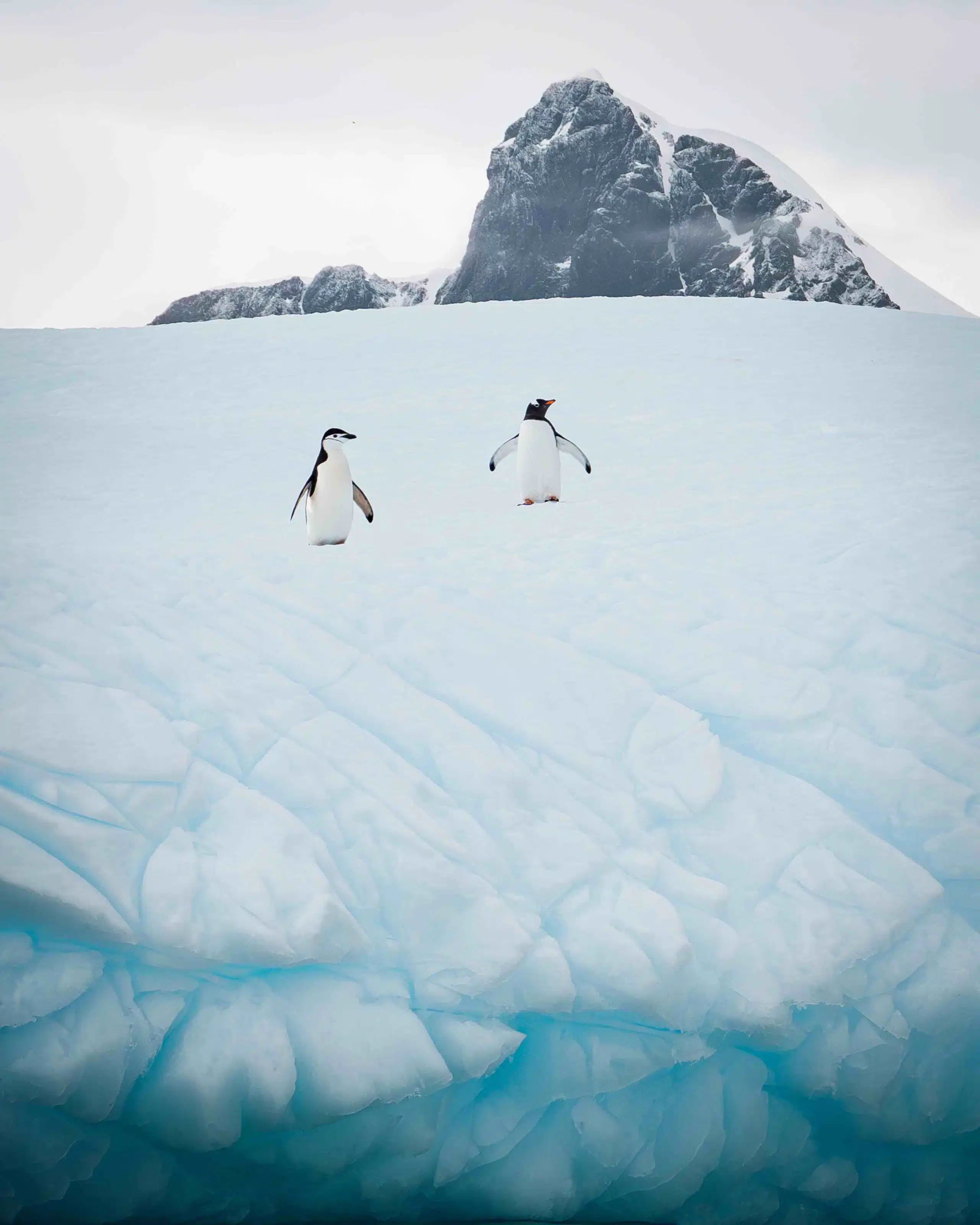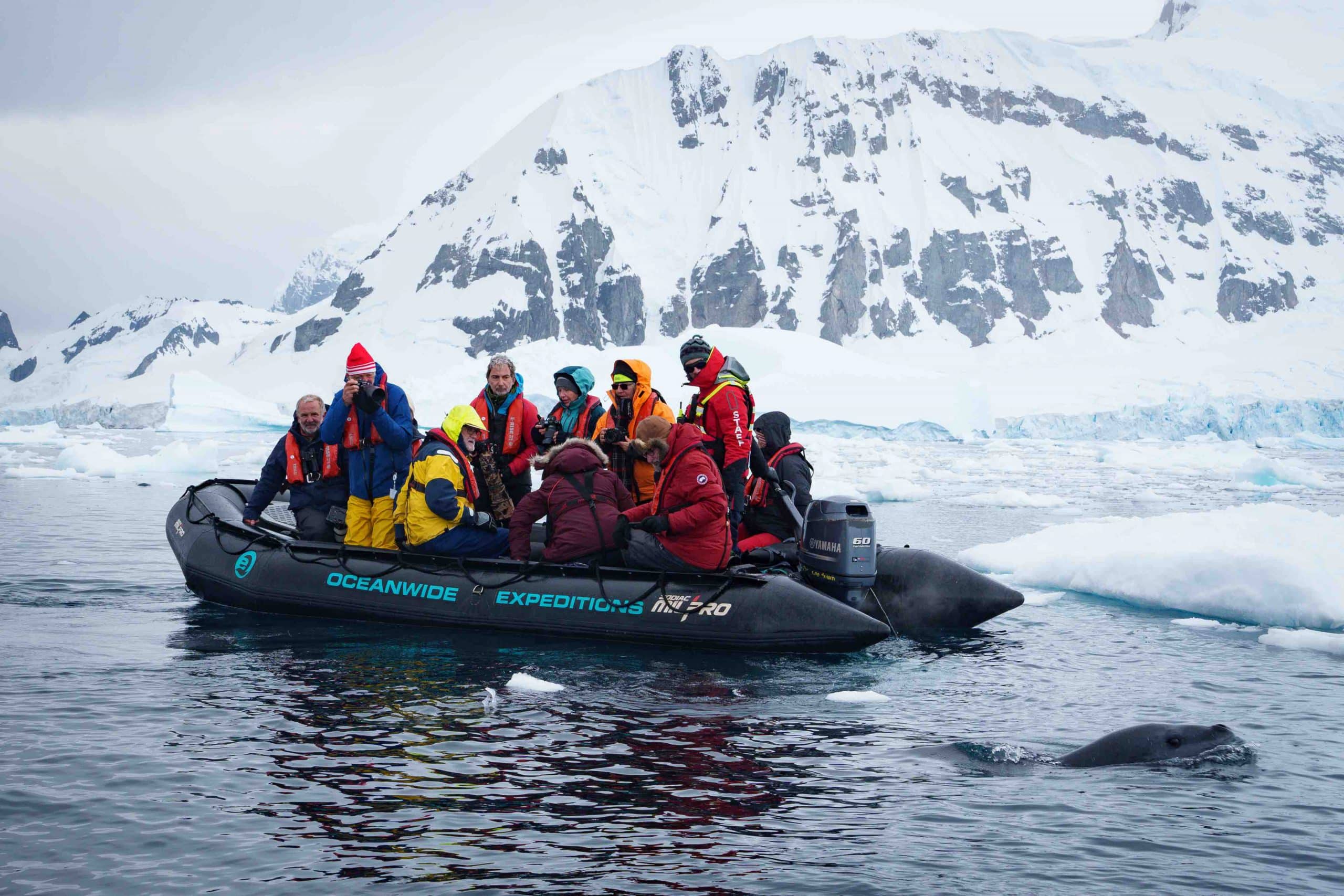Story: Hoang Phung Hieu
Photos: Nguyen Ngoc Thien
At the southernmost tip of the Earth, Antarctica is known for its majestic ice sheets, shimmering glaciers, and unique wildlife. Spanning approximately 14 million square kilometers, it is the world’s coldest continent, with temperatures dropping as low as -89°C. Its extreme climate and harsh conditions only enhance its appeal for adventurous travelers.

On my fifth journey to explore Antarctica, my heart was filled with as much excitement and anticipation as upon my first visit. This place has become familiar – no longer a mere destination but a “second home”.
Crossing the world’s most challenging strait
To reach Antarctica, our expedition team flew to the city known as “the end of the world” – Ushuaia, where we boarded a ship to begin our voyage to the other side of the continent. The greatest challenge on this journey is crossing the Drake Passage, one of the most treacherous stretches of water in the world. During Ernest Shackleton’s Antarctic expedition, Alfred Lansing described it as “the most terrifying piece of ocean on the planet“. This strait connects the southern tip of South America to the northernmost point of the Antarctic Peninsula, spanning approximately 1,000 kilometers in width and reaching depths of up to 4,800 meters. The Drake Passage is notorious for its massive waves, harsh weather, and powerful ocean currents.
The Drake Passage is not just a geographical obstacle but also a test of one’s courage, as each traveler must confront their fears. Having heard many stories about the violent waves, a sense of nervousness spread and grew in my chest as our ship set sail. As we ventured deeper into the strait, the waves grew larger, and the crew constantly reminded everyone to hold onto the railings, take seasickness medication if needed, and visit the doctor’s office if required. Throughout the journey, I felt the power of the ocean, as waves battered the ship’s sides, reminding me that we were in a battle between humans and nature. These challenges made the journey all the more thrilling.

The gateway to the Antarctic mainland
After crossing the Drake Passage, our group arrived at Portal Point, one of the first stops in Antarctica. Many explorers have stopped here during previous Antarctic expeditions. Portal Point looked surreal, with a shimmering landscape of snow-covered mountains and icebergs that glistened in the sunlight.
Portal Point is located at the entrance of Charlotte Bay on the Reclus Peninsula in the western waters of Graham Land. The British built rescue stations here in 1956, which were relocated to another island in 1997. Portal Point served as the gateway to the Antarctic mainland for early explorers.
As we ventured deeper into the continent, the ground was completely covered in ice and snow, with only a small bare patch near the sea serving as a nesting ground for Gentoo penguins. We had entered a magical world of icebergs, from tiny to massive, with colors ranging from white to blue, some resembling towering white castles on the sea. While exploring Portal Point in a rubber dinghy, we could admire Arctic terns, famous for undertaking the longest migratory journey in the world – traveling between Antarctica and the Arctic. This is also the habitat of the kelp gull, with around one million living in the Southern Ocean. They are easily recognizable by their gray wings and yellow beaks. They often perch on icebergs, helping photographers to capture stunning shots.

Natural wonders and exotic wildlife
Continuing our journey, we arrived at Neko Harbor, one of the most famous tourist spots in Antarctica. With its breathtaking scenery and rich biodiversity, Neko is an ideal place to admire icebergs and view many rare species.
Neko Harbor is located on the eastern shore of Andvord Bay, 11 kilometers south of the Errera Channel. Discovered by explorer Adrien de Gerlache during the Belgian Antarctic Expedition (1897 – 1899) and named after the whaling ship Neko, it was once a major British whaling station between 1911 – 1912 and 1923 – 1924.
During our tour in an open dinghy, it began to snow heavily. Suddenly, a humpback whale surfaced, splashing its tail as our group cheered, despite reminders to keep quiet. Our lapse was understandable, as witnessing a 36-ton, 19-meter-long whale swimming right in front of you is exhilarating. Spotting a humpback whale was a great stroke of luck, as there are only about 38,000 individuals recorded worldwide.
Besides Neko Harbor, Paradise Bay is another main docking area in Antarctica. It earned its name thanks to its mesmerizing scenery, with high mountains shielding the bay from storms, creating an eerily calm harbor. Here, visitors can kayak to enjoy the view, while those on rubber dinghies can learn about the local birdlife, especially the blue-eyed cormorants nesting on the cliffs. In the distance, Gentoo penguins swam under falling snow, creating a scene straight out of a fairy tale.
One of the most memorable moments on our trip was sailing through Lemaire Channel. This 11-kilometer-long strait, its narrowest point only 800 meters wide, is surrounded by snow-capped peaks rising up to 300 meters. As our ship slowly entered the channel, the water was as smooth as glass, reflecting the majestic mountains.
Antarctica, with its surreal beauty of ice and snow, gave us unforgettable experiences. This journey to explore the frozen continent was not just an adventure but a clear testament to the power of nature and the miraculous resilience of many species in the face of harsh weather.










